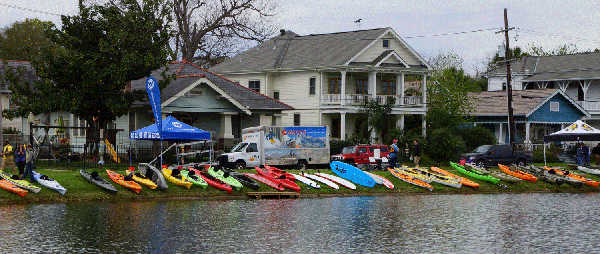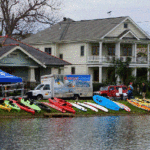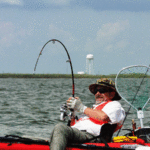
Things to consider when purchasing a kayak
Question from the Kayak Fishing Forum:
I am new to the whole kayak fishing. Just looking for a nice, cheaper alternative to buying a boat and still getting out on the water for a nice trip. See some nice rewards when going for reds. Any info would be appreciated. Mainly what’s a nice boat to get started with, buying, gear, etc? Thanks again!
Scottjn85
he LouisianaSportsman.com forum regularly gets questions from sportsmen like user Scottjn85 looking to get started with kayak fishing. While purchasing your first kayak is not difficult, there are some important considerations that will help ensure you make the right decisions.
Kayak fishing is the fastest-growing segment of sportfishing — and for good reason. Kayak fishing offers a level of excitement that can’t be found fishing from conventional power boats. The combination of manual power, and the ability to access secluded waters and fishing right at the water’s surface combine to add a thrill factor that hooks many new kayak anglers everyday.
Choosing a brand and model of fishing kayak should not be done lightly. What’s best for me and my preferred fishing area and techniques might not be right for you.
Models are available to comfortably fit all sizes of anglers. The most important piece of advice is to try as many models as possible before making a selection. Utilize kayak demo days offered by your local dealer to test drive several different kayaks for a side-by-side comparison. You should never purchase a kayak without actually trying it first.
Kayaks are generally divided by sit-in or sit-on types.
Sit-in models are similar to a canoe, in that the hull is single walled and any water that enters the hull must be bailed or pumped out.
Sit-on kayaks are double hulled and sealed with waterproof hatches. The hulls have scupper holes that allow water to drain through the hull. Sit-on kayaks are most popular for fishing, and offer many more opportunities to add accessories.
Paddle or peddle? Paddle kayaks are the least expensive, and most manufacturers offer entry level models.
Although paddling is the traditional means of propelling a kayak, manufacturers such as Hobie and Native offer pedal-drive propulsion.
Pedaling allows anglers a virtually hands-free fishing experience. Pedaling uses the larger leg muscles, and many anglers find that they can pedal farther and longer than with a traditional paddle.
Many kayak anglers have found that pedaling affords them much more actual fishing time since it’s impossible to cast and paddle at the same time.
Try both types to see which is best for you.
Also consider how you will transport your new kayak. If you will need to car-top it, hull weight might be an important consideration. Other options include trailering or carrying in the bed of a pickup truck.
You should also plan for the storage of your new kayak. Most modern kayaks are made of durable roto-molded polyethylene plastics, but should be stored out of direct sunlight. Using a cover or storing the kayak inside a garage will keep it looking new and greatly extend its life.
Safety is priority No. 1. A personal flotation device (PFD) is a no-brainer, and should be worn at all times. Many PFDs are designed specifically for kayakers. Try on the PFD while actually sitting in the kayak. Some have too much foam in the rear, and will make sitting in a kayak seat difficult.
With hot Louisiana summers, many find inflatable PFD vests or belts more comfortable to wear. They come in both manual and auto-inflate models.
Find the PFD that suits you best and wear it. Remember, the life you save will be your own. The law requires that a PFD be onboard the kayak, easily accessible and not stowed in a hatch.
Although one of the benefits of kayak fishing is the ability to access waters not easily accessible to power boaters, the popularity of the sport is constantly putting the two in the same areas. Increasing your visibility by choosing a brightly colored kayak and adding a high visibility flag will make you easier to see.
If you’ll be in your ’yak at night or in low-light hours, add some reflective tape to the kayak and carry a bright, hand-[held waterproof flashlight.
A new kayak, even a fishing model, will not come with all of the things you need to make your fishing more successful and enjoyable. You’ll soon be bitten by the urge to “pimp your ’yak.”
Some of the most-common and relatively inexpensive additions are rod holders, anchor trolleys and storage crates.
You will also want a dry bag and floats and leashes to keep from losing your gear overboard.
Many kayak anglers add sophisticated electronics such as depth/fish finders and GPS units.
No matter where you live, chances are there is a kayak fishing club near you. Clubs exist all across the Gulf Coast, and are a great way to meet fellow ’yak fishermen, participate in tournaments and share fishing information.
The newly formed Lake Pontchartrain Basin Kayak Fishing Club plans to hold regular meetings and events in the metro New Orleans area.
Kayak clubs are also a great source for maps, launch information, rigging tips and more.
Are you still unsure about kayak fishing? Book a trip with an experienced kayak fishing guide. They will provide you with a kayak and all the equipment and instruction necessary for you to get a first-hand sampling of the great sport of kayak fishing. This will help you decide if kayak fishing is for you before you invest in a kayak and gear of your own.
If you are new to fishing, kayaking is an exciting and relatively inexpensive way to get started. If you are a seasoned fisherman, fishing from a kayak will take your fishing to a whole new level.
As one kayak manufacturer’s slogan goes, “Every angler has a story. Every kayak angler has a better one.”




